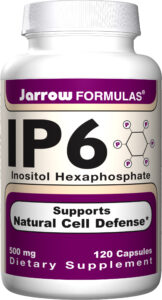What’s up with Phytates?
We had a question recently at the clinic about phytates in relation to our frequent recommendation to consume raw oats. Paleo diet proponents also sometimes cite phytates as a reason to avoid grains. Phytates have been called an anti-nutrient because they can diminish absorption of certain minerals, but this is a bit of an oversimplification. Read on to learn more about phytates than you probably wanted to know. If you just want to know if you should be worried, jump to the end for my conclusions.
What are phytates?

Phytates are a group of phyto- (plant) chemicals which bind phosphorus needed for plant life-cycles. They are a part of the fiber component of many foods. Phytates include phytic acid, inositol hexophosphate (IP-6) and others. Phytates are broken down by the enzyme phytase, which is present in the plants themselves, many animals and bacteria. In fact, some of the bacteria living in our gastrointestinal (GI) tract produce phytase, but not in large quantities.
What foods contain phytates?
Phytates can be found in many foods including beans/legumes, cereal grains, nuts and seeds. Higher concentrations are found in bran fortified products as this is the fiber portion of grains. Phytates have been cited as one of the reasons to avoid soy foods, but cashews and some other nuts may contain even greater amounts of phytates. In fact, potatoes may be the greatest source of phytates in the American diet and the phytates in potatoes appear to be resilient to various cooking methods that may decrease phytate content in other foods.
How can you decrease phytates in foods?

Soaking and sprouting beans and grains may reduce phytate content. Soaking and sprouting start the process of germination and activates phytase which breaks down phytates. Fermenting foods, which relies on bacterial action, may also provide enzyme actiity to break down phytates.
What’s the problem with phytates?
Phytates are designed to bind the mineral phosphorus, but they may also bind iron, calcium, zinc and magnesium, reducing their bioavailability for absorption. Mineral bound phytates are not absorbed into the blood stream and are eliminated in stool. This creates the potential for mineral deficiencies. There is some question about how the body may up or down regulate absorption of minerals in response to varying levels of phytate in the diet and this link may be more theoretical or more important in certain populations.
What’s the upside of phytates?

First, some schools of thoughts believe that phytates binding to minerals is actually a good thing, preventing excessive absorption of minerals and the resulting formation of free radicals. For those with deficiencies, this would obviously be counter productive, but this may be a desired effect for some persons.
Phytates have also been shown to have strong antioxidant effects and are even used as an additive by the meat industry to prevent spoilage.
Additionally, IP-6 (a phytate) is used as an anti-cancer supplement. The research on the anticancer activities of phytates show multiple mechanisms including immune system activation, disrupting the formation of blood vessels to cancerous tumors and increased cell differentiation, which is typically decreased or lost in cancer.
Conclusions
Most Americans are probably not suffering from a nutrient deficiency specifically attributable to phytates. Additionally, the many health benefits of eating foods that contain phytates outweighs the potential for concern about nutrient deficiency specifically from that source. There are some aspects of diet, depending on the individual, that may need to be micromanaged, but phytates are probably not one of them. Focusing on a diverse and adequate intake of high nutrient density foods should be enough for most people not to have to think too much about phytates. If you are consuming a diet high in phytates and have a persistent mineral deficiency, consider having an appointment as their are many more common potential causes of nutrient deficiency including dysbiosis, SIBO, low stomach acid, insufficient dietary intake.
